Jobs lost as Corporate Solutions collapses
By Chris Tindall

The closure of a Solihull-based logistics firm due to soaring fuel prices and a fragile economy has resulted in more than 200 staff being made redundant.


Corporate Solutions (Logistics), which specialised in transporting goods for supermarkets, called in administrators on 17 October and after an accelerated sales process failed, it was forced to close down.

The company operated from sites in almost all the traffic areas, with seven O-licences authorising

Its most recent set of accounts, for the year to 30 June 2021, showed it was operating on slim margins. It had experienced a 5% reduction in turnover to £32.4m during the period and pre-tax profits had fallen 2.9% to £322,000.
Raj Mittal and Arvinder Jit Singh, joint administrators at FRP, said the company had suffered from financial difficulties in recent months due to the loss of some long-standing contracts and pressure on profit due to the rise in fuel prices and other input costs.
a statement, they said: “The
directors conducted an accelerated sale process to find a buyer for the business and bring in fresh investment. However, without any viable offers, the directors were forced to close the business.
“Regrettably, more than 200 roles have been made redundant. A handful of staff remain in the short term to assist with windingup operations.”
Mittal said: “Like many businesses in the logistics sector, Corporate Solutions has had to contend with a rapidly rising cost base, not least driven by high fuel prices, as well as weak economic growth and fierce competition over contracts.
“The business was unsustainable without further investment and, with the business having ceased to trade, we will now move towards realising its assets.”
EXPANSION PLANS: The Bartrum Group has invested £6m in a 70,000sq ft warehouse and 6,000sq ft of office space at its Suffolk HQ. The family firm reported record demand in 2021/2022 and said the best way of achieving growth was through expanding its warehousing offer. The development will be completed early next year. As part of the 3.7-acre land transaction, a 25-year roof lease was agreed, allowing neighbours Permastore to install and benefit from a 1.4MW solar array of 3,700 panels. Bartrum operations director Tremayne Johnson said: “It’s rewarding to see the family invest in a facility such as this and I’m delighted the roof will be covered with solar panels.” Pictured are: transport operations manager John Youell (centre) with, left, joint MDs Shaun and Robert Bartrum. Sharp ■ Informed ■ Challenging 31.10.22 Caledonian Logistics .....................................p4 Drac Logistics ...............................................p4 FreightForce Distribution ...............................p6 Knowles Transport ........................................p3 Maritime Transport ..................................p3/12 Stobart .........................................................p4 R Swain & Sons ............................................p3 Stan Robinson Group .....................................p4 Youngs Transportation & Logistics .................p3 OPERATORS INSIDE Master mover Knowles makes moves on rival 3PL Masters Logistical p3 Ups and downs Stan Robinson Group upbeat despite 40% profit drop p4 Switched on FreightForce Distribution switches to Pall-Ex Group p6 Challenging times Former senior TC on the difficulties facing operators p8 NEWS INSIDE Focus: regulation p8 Viewpoint: skills gap p10 Interview: John Williams p12 Low-energy tyres p15 MT Awards winner: Low Carbon p18 Contract losses and pressure on profit forces Solihull firm to close down
between six and 35 HGVs. MAN VANS AVAILABLE NOW WELFARE & PANEL VANS AVAILABLE FOR SALE & RENT CALL TYLER FOR MORE INFO: 0330 124 5651 info@hireco.co.uk hireco.co.uk YOUR TOTAL TRANSPORT SOLUTION
In































Knowles makes move for Masters Logistical
By Tim Wallace
Cambridgeshire-based Knowles Transport has acquired a 100% shareholding in fellow 3PL ware housing and distribution provider Masters Logistical.
Based in Ely, Masters offers services across Cambridgeshire and East Anglia and is a member of the Palletline freight distribution network.
Founded in 1932 and now in its third generation of family leader ship, Knowles primarily serves the ambient food, drink and packaging sectors.
With a fleet of 325 vehicles and trailers, 2 million sq ft of warehous ing space across two sites, and a headcount of 380, its fleet will be bolstered by a further 42 vehicles and trailers, 85,000sq ft of ware housing space – with expansion
capabilities of a further 50% – and 30 members of staff.
Knowles MD Alex Knowles (pictured left with Paul Upton, Masters Logistical MD) said: “Being a 3PL warehouse and distribution specialist like ourselves, we felt that Masters Logistical was an excellent fit to bring on board. Furthermore,

Masters’ ethos, company values and customer-centric approach are very much synonymous with our own.
“Masters Logistical will continue to trade under its name, offer its full range of services, and retain its status as a long-standing share holder member of the Palletline network.”
Youngs continues buying spree
Purfleet haulier Youngs Transportation & Logistics has completed its third acquisition in 18 months following its purchase of warehouse and distribution pro vider Imorex Shipping Services.
It follows the buyout of Southampton-based container firm Eldapoint earlier this year and North West Cargo in Warrington in December 2020.
Youngs MD Paul Pavitt said: “This gives us another strategically placed depot, mere minutes from the port of Felixstowe.
“It’s the final part of the puzzle. We wanted to ensure we could operate our LCL [less-thancontainer-load] products from port-centric locations in Felixstowe, London, Southampton and Manchester.”
Imorex handles import and export cargo movements including FMCGs, food, electronics and industrial items. It recently surren dered its O-licence authorising six HGVs and 12 trailers out of two operating centres in Felixstowe and Huntingdon.
R Swain & Sons targets new markets after battling driver shortage
Kent-based R Swain & Sons is “reinvigorating” its client base and seeking new markets this year after returning to the black in 2021.
In its latest annual results to 1 January 2022 the haulage firm announced a pre-tax profit of £763,083, compared with a loss of £1.4m in 2020. Turnover rose to £57.7m, up 12% from £51.4m in the previous year. It said: “Trading
was in line with expectations and ahead of the prior year, despite the continuing Covid-19 pandemic and the lockdown during the first quarter of 2021.”
The company battled with a range of chal lenges through the year, which added to costs, according to the report. It said: “A shortage of drivers caused by several factors, including the
continuing effects of the UK leaving the EU, the rate of pay being insufficient, and lockdown measures, all resulted in several pay adjust ments, thus increasing operating costs.
“There have also been significant increases in vehicle and trailer costs during the year, which has forced us to pass higher rate increases onto our customers.”
Coca-Cola shakes it up with new rail deal
Coca-Cola is working with Maritime Transport and GB Railfreight to distribute its soft drinks between manufacturing sites and third-party warehouses across London and Yorkshire by train instead of road.

It said that when running at full capacity, the change will see up to 2.5 million cans and bottles of some of the world’s most popular beverages delivered by rail each day.
The decision should see Coca-Cola reducing its carbon emissions by nearly 50% compared with doing the work by road. The company is aiming to reduce CO2 across its value chain by 30% by 2030 and then net zero by 2040.
The move represents Maritime’s first domestic distribution intermodal service, which will see the movement of heavily modified containers by rail six days a week, with
Maritime’s distribution fleet making final-mile deliveries to Coca-Cola’s sites.
The switch will save a total of almost 4 million road miles a year and remove 15,000 lorry journeys from UK roads.
End of the road for Lockerbie stop
A strategically important truck stop in Scotland is to close at the end of this month, raising con cerns about where HGV drivers can safely park.
The Lockerbie Lorry Park, next to the A74 between junc tions 16 and 17, has space for 160 HGVs and a 24-hour cafe.
In recent months it had been forced to close at weekends due to staff shortages and then it encountered difficulties taking on more staff when the site was put up for sale.
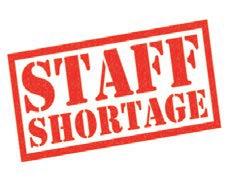
MotorTransport 331.10.22 motortransport.co.uk News
Long-established family firm boosts capacity with purchase of local rival
Drac Logistics looks north with Caledonian acquisition
Staffordshire-based Drac Logistics has purchased Aberdeenshire haulage firm Caledonian Logistics for an undisclosed sum.
The acquisition sees Stokeheadquartered Drac Logistics expand its footprint in Scotland, where it operates an office in Falkirk. The group, which employs 45 staff, will transfer the four staff based at its Falkirk office to the Caledonian Logistics site in Cumbernauld.
Caledonian Logistics, which has 145 employees and operates a fleet of 90 trucks, runs depots at its headquarters in Kintore, as well as at Oldmeldrum, Inverness and Cumbernauld. It also owns a parking yard in Lockerbie.
Drac owner and chief executive Alex Hayes said the acquisition allowed his company to set up a Caledonian Logistics container haulage division, based in Grangemouth and Aberdeen. This will see
a £600,000 investment for an additional fleet of 10 vehicles and 14 skeletal trailers.
The acquisition was triggered by the decision by Caledonian owner Derek Mitchell to step down. He will continue as a director until his retirement in December.
Caledonian Logistics saw pre-tax losses of £872,108 (2021: £134,470) on turnover of £15.17m (2020: £13.95m) for the year to April 30 2022.
Stan Robinson upbeat despite profit decline
By Carol Millett
Stan Robinson Group is reporting “another successful year”, despite revealing a near 40% drop in pretax profits in its latest annual results.
The family-owned Staffordshire haulier specialises in nationwide haulage distribution as well as storage and holds operator licences for a total of 230 HGVs. It employs around 285 staff.
Its recently published annual results for the year to 31 May 2022 show a rise in revenue to £26.6m (2020: £25.9m) with pre-tax profit down by 39% to £1.4m (2020: £2.3m).
The company remained upbeat in its strategic report to the results, noting “another successful year for Stan Robinson Group. Despite the challenges in recent years brought about by the global

pandemic, the financial performance for the year ended 31 May 2022 was still good.”


The report said that while turnover stood at £26.6m, compared to £25.9m last year, this was not a real increase as turnover includes the diesel surcharge.
“The surcharge is included in the diesel costs, which rose from

£4.3m in 2021 to £5.1m this year. In real terms group turnover fell by just £300,000,” the report explained.
It added that throughout the year the group has remained financially strong with very good levels of cashflow providing self-funding without the need for bank financing.
Stobart takes global prize for sustainability

Stobart has won a Transporeon award for being the most sustainable carrier after demonstrating that it offered outstanding customer commitment and the lowest carbon footprint.
Peter Daglish, Stobart IT applications manager, said:
“We have a well-established team of key people who, with their expertise, skills and knowledge, have driven our various customer projects.
“They are an integral part of our business and we recognise the important role they played in this fantastic achievement for Stobart.”
Stobart added that over 130,000 carriers worldwide were in consideration for the award.
Fleet management getting more complex by the day?
motortransport.co.ukNews 4 MotorTransport 31.10.22
Group navigates economic uncertainty to hail ‘another successful year’
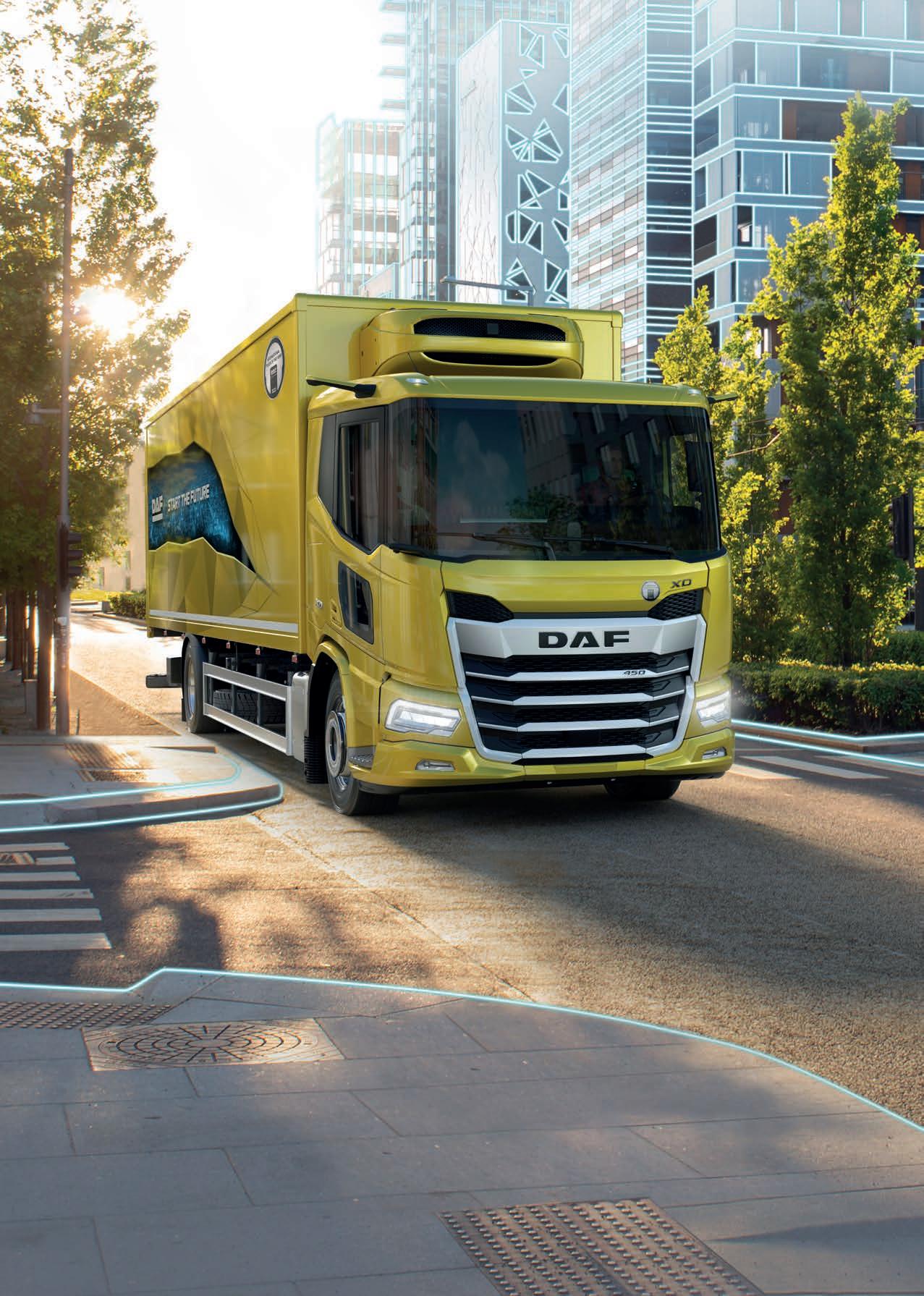

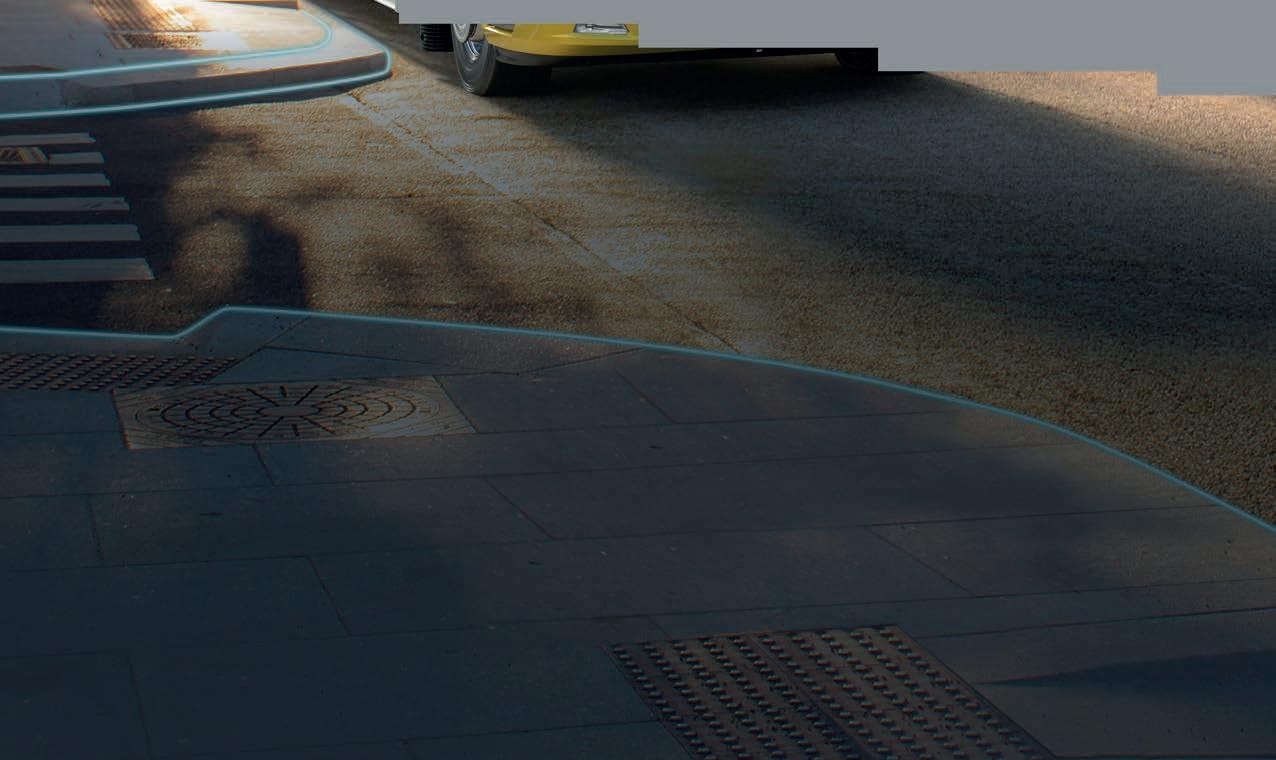




FreightForce in Pall-Ex switch

 By Tim Wallace
By Tim Wallace
Norwich-based FreightForce Distribution, the first founding member of the Palletforce network, has become the latest logistics heavyweight to join Pall-Ex Group.
The long-established storage and distribution specialist has become a shareholder member of both the Pall-Ex and Fortec palletised freight distribution networks as it undergoes major expansion and diversification.
It willl cover the Norwich and Great Yarmouth postcode areas on behalf of both networks.
The move is part of a growth drive for FreightForce following a £2.5m investment in a new warehouse in Great Yarmouth.
The facility will enable the firm to handle and store an additional 5,000 pallets, taking its overall
capacity to over 9,000 pallets per day. FreightForce said the move would support its growth and strenghten its focus on the highest standards of service quality and customer experience.
The commercial benefits of additional pallet size options through Pall-Ex and Fortec were another key factor, it added, combined with market-leading freight scanning and tracking and
the scheduled deployment of ETA capabilities.
FreightForce owns 58 vehicles and employs a workforce of 96, which it expects to increase by at least 10 once the new warehouse is fully operational.
Martin Halliday (pictured left), commercial director at FreightForce, said: “We have ambitious plans to grow the business and further develop our services, particularly our palletised freight offering.

“In order to achieve this, we recognise that FreightForce needs the right partnerships in place with the right service comes first ethos.”
Barry Byers (right), Pall-Ex MD–UK Group, added: “Partnering with quality hauliers is a priority for our networks and this is great news for Pall-Ex and Fortec customers.”
Freight Carbon Zero delivers news for tomorrow’s world
Road Transport Media (RTM), the leading media information business serving the CV and road freight sector, has announced a new brand: Freight Carbon Zero, dedicated to providing trusted, independent information about the race to zero emissions.
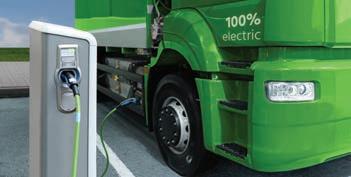
Freight Carbon Zero joins Motor Transport, Commercial Motor, Truck & Driver and Transport News in RTM’s portfolio of magazines and websites serving the needs of the UK road freight sector.
The new information service consists of a weekly newsletter, website, podcast and webinar series and it launched at the Edinburgh Clean Air Zone event organised by sister title Transport News on 18 October.
“Freight Carbon Zero represents a major step

forward for us as a group,” said RTM director Vic Bunby. “The industry’s journey to carbon zero is going to completely change the face of the sector and there are some big decisions for all those involved. We believe it is essential to provide trusted, independent information to help guide the decision-making process.”
Leading the project is former Commercial Motor editor and current MD of RTM’s parent company, DVV Media International, Andy Salter. He said: “I have been involved in the commercial vehicle and road freight sector all my working career and it is clear the tectonic plates of the industry are going to shift as the sector decarbonises.
“Freight Carbon Zero will endeavour to give all those involved in the industry a resource to keep up to date with the latest developments.”

Phase one of the project starts with a news and information service. In Q1 2023 a number of additional tools are planned to be released, all aimed at assisting business decision making as companies seek to adapt to a zero carbon future.
Discover a simpler way…

motortransport.co.ukNews 6 MotorTransport 31.10.22 Palletforce founding member makes move to capitalise on recent £2.5m warehouse investment
Photo: Shutterstock

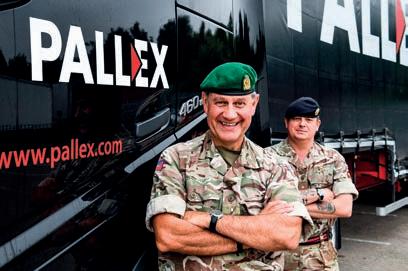
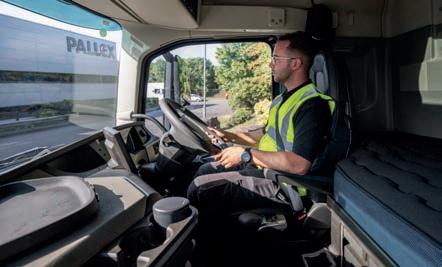
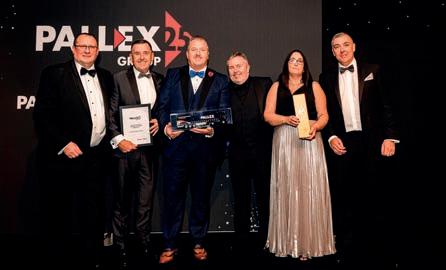
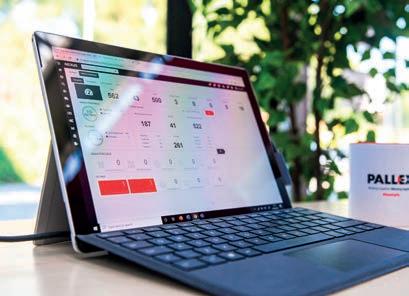
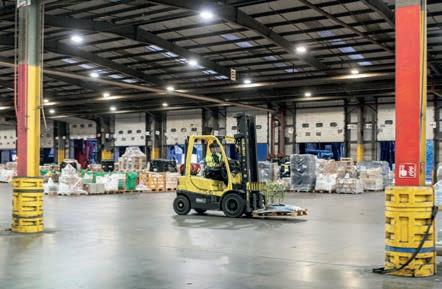

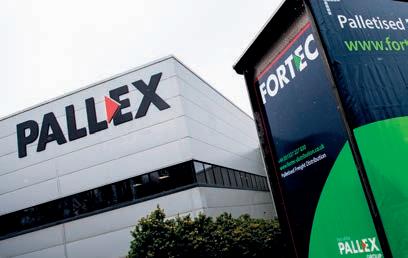

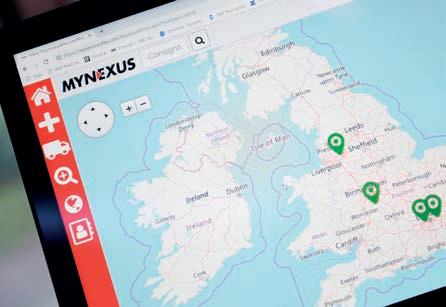
Rising to the challenges
In writing this article I have reflected on the differences (and similarities) of my former life as senior traffic commissioner and my current life as transport lawyer, consultant and CPC trainer. This got me thinking about the top five issues facing operators that I dealt with in each role. It will come as no surprise to you that they are similar. Here they are – as said on TV reality shows – “in no particular order”.
1) The impact of a change of entity on your licence
Unsurprisingly, accountants and lawyers don’t know the finer points of operator licensing. You might be a sole trader or in partnership or a limited company, or even a limited liability partnership. You probably got your operator licence many years ago and the only time you look at it is when you renew it every five years – and you may not even look at it then, instead asking someone in the office to deal with the ‘admin’ for it.
But to the TCs this is not an admin task – think of it as a renewal of wedding vows and treat it just as importantly. Completion of the renewal form is a clear statement to the TC of the current position and if it is not accurate it will come back to bite you. For example, at some time in the past five years you may have changed from being a sole trader or partnership to a limited company. The renewal form gives you the chance to confess all at that stage. If you don’t, the TC will give you a very hard time when they find that you haven’t.
In fact, the legislation requires you to apply for a shiny new licence when you change the legal entity. The traffic commissioners are geared up to dealing with these applications and their staff will want to help when you apply at the right time. But if you don’t, you will probably find yourselves called to a public inquiry and the TC may well be reluctant to grant the new licence either on an interim basis, or indeed at all. You may find yourself suddenly having no authority to operate and having to park your vehicles up until the TC decides whether to give you a new licence.
So please make sure you apply for a new licence if you change your legal entity – and if in doubt contact your friendly transport lawyer who will guide you through the process.
2) Roller-brake testing
The issue is simple – an unladen roller-brake test report is generally not worth the paper it is written on. DVSA has been promising to update the 2020 Guide to Maintaining Roadworthiness for a while, but this has still not been done, so in the meantime log on to your laptop, use a search engine to find it, and go straight to Section 5.3 Braking Performance Assessment – and read it. And then look at the helpful link. Prepare your HGV for the brake test (www.gov.uk). Best practice dictates that you do laden rollerbrake tests on your vehicles at every safety inspection, although this may not always be possible. And make sure you are signed up
for the DVSA updates so that you know when the guide is updated.



3) The value and purpose of the MoT
When I deliver TM CPC refresher courses, one of my favourite slides shows the standard of a vehicle at MoT. The lesson learnt is that the MoT is the minimum standard at which the vehicle can travel on the road to comply with the Construction and Use Regulations. It does not mean the vehicle is in optimum operating condition. That standard is, for example, six or eight weeks higher than the MoT. So, beware the MoT – it is the minimum and you don’t want to operate at rock bottom – do you?
4) The transport manager role
I could write a whole article (or maybe a book) about this, so here is your starter for 10. The transport manager is the most important person in your company for your licence compliance and they must be able to do their job in line with the STC Guidance. And if they can’t or won’t, then it is off to see the TC again at one of those pesky public inquiries. To prevent this, get that laptop out again, find Statutory Document No. 3 on your search engine and then read paragraph 57 – all TCs know this
practically off by heart, so make sure you and your transport manager/s are complying with it.
5) Driver daily walk-round checks
I always have such fun asking drivers if they have checked their nuts that morning and then saying I am asking about their wheel nuts. Again, driver walk-round checks is a topic for a complete article, but in summary this still causes untold problems for operators, either through ignorance, lazy drivers, or ones who don’t know how to do it properly because they have never had the proper training. I dread to think how many so-called ‘nil’ driver defect reports I have seen because the driver couldn’t be bothered to do the check and then the PMI sheet is littered with driver reportable defects.

You know what I am going to say don’t you – when DVSA finds this on looking at your records, it’s off to see the TC again. How to record them – paper or app? It doesn’t matter as long as it is effective and actually works. If it doesn’t, then review it ASAP, otherwise one of your wheels might fall off and we know where that leads.
So dear reader take heed. I would wager a bet that at least one of these issues – and probably more – apply to you. If so, then sort them out now – don’t leave it, otherwise telling the TC that you were just about to as you see them face-to-face at a public inquiry might not cut it.
motortransport.co.ukFocus: regulation 8 MotorTransport 31.10.22
A former senior traffic commissioner turned consultant on the issues faced in both roles
■ Beverley Bell CBE, director, Beverley Bell Consulting
Photo: Shutterstock
tvsinterfleet.com With our integrated approach to keeping your fleet in motion.





There’ll be winners and losers
It’s ironic that as efforts to attract new drivers to the industry begin to pay off, volumes have slumped and many firms are parking up big chunks of their fleets.
With consumers reportedly set to spend £4bn less this Christmas than last, smaller operators are waiting anxiously to see what this year’s peak season brings.
significant operators are in danger of going the same way as Corporate Solutions (see page 1) as the situation unfolds.
The newspaper for transport operators
To contact us: Tel: 020 8912 +4 digits or email: name.surname@roadtransport.com
Editor Steve Hobson 2161
Head of content Tim Wallace 2158
TimWallace Head of content Motor Transport

Some manufacturers and supermarkets are said to be more than 10% down on their plans.
Will the big logistics firms still want to subcontract to smaller players when their own assets are doing nothing?
It’s a worry for anyone who has invested in extra trucks and taken on long-term leases, believing volumes would keep rising. Word has it that at least half a dozen
But there’ll be winners as well as losers. The winning SMEs will be those who exercise their limited liabilities as best they can. Some will need to enforce standard payment terms rather than just accept what they’re given. They’ll also need an asset-optimised model where every truck is working and they’re not carrying a liability.
Diversifying will also help, so that if retail dips they don’t necessarily dip with it.
And the good news is that if a lot of SMEs have gone out of business by the time volumes increase, we’ll have a lack of resource and a big new demand, so those left standing might do very well.
Bridging the fleet technician gap
The technician shortfall is down to multiple factors. The impact of Brexit meant the UK lost many qualified technicians almost overnight, while others reaching retirement age have been slowly leaving the industry, taking their skills with them and leaving gaps behind.
Victoria Knight HR director Rivus

Plugging the skills shortage with new recruits may sound like a simple solution, but it’s not. The implications of the pandemic have meant a lower intake of apprentices over the last few years and, due to colleges and training centres repeatedly closing during the pandemic, those that did join the industry had to undertake extended training periods to complete their apprenticeships.
The problem is made worse by increasing competition within the industry. Some technicians have migrated to other roles outside the industry. The shortage of qualified HGV drivers has also created an aggressive wage war, pitching HGV service providers against each other to recruit from an ever-decreasing talent pool.
Recognising the growing problem, the Institute of the Motor Industry (IMI) has been consistently lobbying the government to take action to plug the skills gap. Earlier this year, an Automotive Sector Employment report published by IMI predicted a shortfall of 160,000 people working in the automotive sector in the next decade, with vehicle technicians accounting for 16% of vacancies – the most in-demand role.
A key issue with the deficit is the rapid acceleration of the EV market, with a shortfall between electric vehicles on the UK roads and the number of approved technicians trained to service, repair and
MoT them. That’s one of the reasons why Rivus has joined the IMI TechSafe scheme and has now trained the majority of its technicians to IMI Level 3 or 4 in electric/ hybrid vehicle system repair. We are working with the IMI to establish our own IMI-approved training centre over the next few months, with a roadmap to deliver training to our remaining technicians in-house. We’ve also embarked on an ambitious upgrade of our garage network to significantly expand EV charging infrastructure across our 78 sites nationwide.
It’s clear from the issues currently facing the automotive sector that more must be done to attract new talent into the industry.
At Rivus we have a deep understanding of the issues facing the fleet sector, so we are committed to making the industry a more attractive proposition. We’ve developed a strategy to always have a cohort of 50-plus apprentices in our business, as well as building our own training centre to ensure training programmes are delivered on time, supported with infrastructure, modern tooling and well-equipped workshops, as well as providing better salaries and attractive benefits for all.
The technician talent gap shows no sign of narrowing, which is why we are also tapping into overseas talent and supporting current and ex-forces personnel make the transition to civilian life in an industry that can provide a long and rewarding career.
Got something to say?
If you would like to contribute to MT’s Viewpoint, email steve.hobson@roadtransport.com
Events and projects editor Hayley Tayler 2165
Group production manager Isabel Burton Senior display sales executive
Barnaby Goodman-Smith 2128
Event sales Tim George 0755 7677758
Classified and recruitment advertising rtmclassified@roadtransport.com
Sales director Emma Rowland 07780 604075
Divisional director Vic Bunby 2121
MT Awards Katy Moyle 2152
Managing director Andy Salter 2171
Editorial office Road Transport Media, First Floor, Chancery House, St Nicholas Way, Sutton, Surrey SM1 1JB 020 8912 2170
Free copies MT is available free to specified licensed operators under the publisher’s terms of control. For details, email mtsccqueries@roadtransport.com, or call 01772 426705
Subscriptions
RoadTransport@abacusemedia.zendesk.com 020 8955 7034


Motor Transport Subscriptions, Abacus, 107-111 Fleet Street, London EC4A 2AB
Rates UK £146/year. Cheques made payable to Motor Transport. Apply online at mtssubs.com
Registered at the Post Office as a newspaper
Published by DVV Media International Ltd © 2022 DVV Media International Ltd
ISSN 0027-206 X
motortransport.co.ukViewpoint 10 MotorTransport 31.10.22
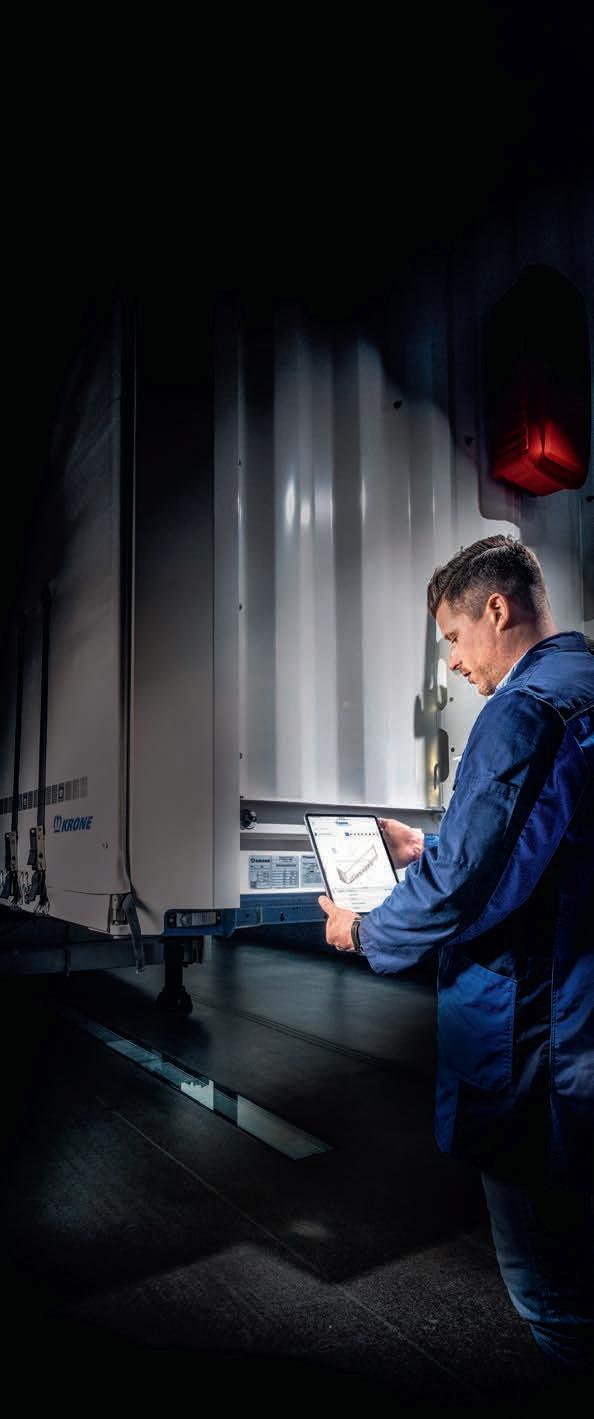

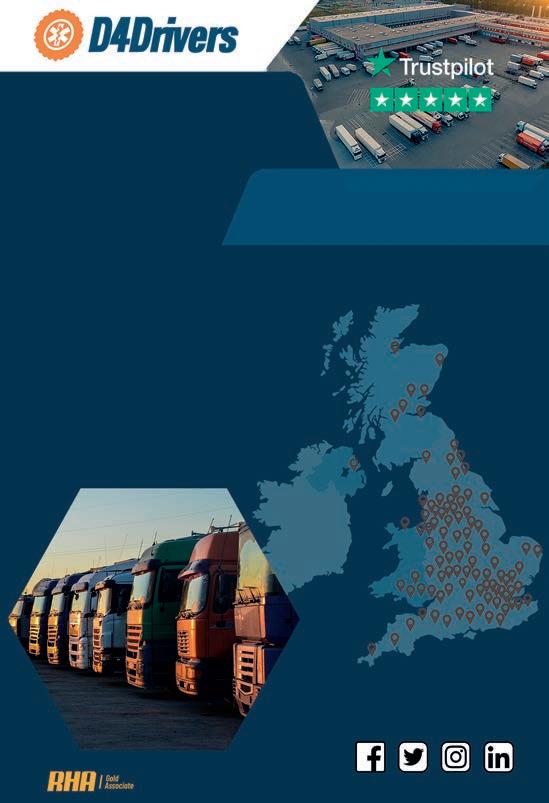






Triumph out of lockdown
helped to crystalise this change in direction.
“Covid was unprecedented, but the last two-and-a-half years have been an extraordinary time for many transport companies. It wasn’t so obvious at the outset but ulti mately, when people stop spending money on travelling and going out, they spend money on goods and goods need transport,” he says.
“A lot of people at home had more time for DIY and gardening – maybe a bit of decoration, putting decking down or building a new shed. And if you’re like me you can’t sit around watching Netflix.”
As if to prove his point, Williams built a garage to house his grandfather’s vintage trucks (alongside devel oping his plans to reshape the business), which he says, “would never have happened if there hadn’t been a lock down”.
How the world turned
The initial response to the first lockdown in March 2020 was a slump in volumes of imported goods as produc tion lines in China shut down and UK workers were ordered to stay at home.

John Williams is the owner and group chair man of Maritime Transport. The company is the market leader in the container transport sector and is quietly building its credentials and reputation with retailers and manu facturers in the distribution sector, operating over 1,600 trucks and 3,300 trailers from 40 locations around the UK.
Williams acquired the business in 2001 and has largely grown the company organically, with a number of strategic acquisitions along the way – Roadways (2014) and the container divisions of DHL (2010) and more recently Wincanton (2020). Today his two sons are involved in the business. Alex Williams heads up the distribution division and his brother Tom is at the helm of container transport.
Before the pandemic Williams began setting a new course for the company, transforming the business model for a low-carbon economy by creating a new Intermodal division, with the largest investment in strategic rail freight interchanges in the UK. Covid
In the year to December 2020 Maritime’s pre-tax profits rose 41% to £13.3m on turnover down slightly to £323m. But since then the bounceback has been much quicker than most people expected. With its strong position in the UK container transport market Maritime was well-placed to support the gearshift.
Covid emphasised the huge deficit of drivers in the UK too. “Customers have understood there has been a chronic shortage of drivers and while good compa nies have survived and are in good shape, working longer and harder for less is definitely not the right way forward. Companies need to be able to invest for the long term.
“Customers of transport companies can behave like the last occupants of Easter Island, where they devour everything, then wonder where has it all gone because they haven’t left anything on the table. But before that happens you get competitors giving up and this has presented us with the opportunities to acquire DHL, Roadways and Wincanton over the years.
“The container transport sector isn’t an easy place to make a living, especially if it’s not your core business. These companies were left with no money in the till, so we were able acquire their container divisions who struggled to evolve and adapt.”
Blast from the past
When MT interviewed Williams in 2015 BC (that’s ‘before Covid’) he said: “A pure container transport company, operating on the old model, would become extinct pretty quick.”
Shipping lines are back in profit and the largest are repositioning themselves in the supply chain. Williams says now: “The big carriers want to service their customers and they can afford to pay more than they have been. So at the moment a container logistics operator can make money, which is helping us to reinvest in the business; it’s a win-win for our customers.”
One challenge for the container market that the laws of physics say has to end at some point is the growing size of container ships. Felixstowe Berths 8&9, for exam ple, have already been equipped with the largest ship-toshore cranes of their type anywhere in the world. With an outreach of 60m, they are capable of handling several 24,000 TEU ‘mega’ container ships with 24 containers across the deck simultaneously.
“Ships have got bigger so there are bigger gaps between ships berthing, which makes life more difficult,” says Williams. “But that has played to our strengths because those big ships need deep water and big cranes and that is Felixstowe, Southampton, London Gateway and Liverpool. We have strong operations in all those places.
Interview: John Williams 12 MotorTransport 31.10.22
The Covid-19 pandemic turned the world on its head for over two years, but Maritime Transport saw only opportunities, as John Williams tells Steve Hobson
LEARNING CURVE: Williams (right) has developed his own recruitment and training schemes to bring his drivers up to scratch
Photos: Tom Lee
“Felixstowe is still the biggest container port in the country and has the largest rail capacity of any UK container port with nearly 40 services every day.”
Rail is playing an increasingly important part in Maritime’s operations as it looks to live up to its ‘Low CO2ST logistics’ strapline. It’s not just container transport from the ports; Maritime is pioneering modal shift in domestic distribution too, using its growing terminalto-terminal intermodal network.
“My strategy for Maritime is to own and operate the most sustainable and cleanest full-load supply chain in the country and the way we are doing that is to use trains for the stem mileage,” says Williams. “The terminals under construction now, and we already operate one of them, are 775m long and the trains are carrying 2,000 tonnes of cargo.
“We have to find a way to increase rail capacity and rail equipment. We handle 34 trains a day from Felixstowe, Liverpool, London Gateway, Southampton and Tilbury through our terminal network and over 20% of our volumes now go by rail.
“We have seven inland rail terminals in operation with more in the pipeline and the delivery mileage of our trucks is less than 40 miles. That will give us the opportunity to convert to battery electric vehicles at a pace and scale for first and final miles that no one else will be able to – provided we can get the supply from the network into the terminals and that is a serious challenge.”
Traditionally rail has been at a price and speed disad vantage against road in the UK because of the relatively short distances and extra lifts required.
“This is becoming a secondary issue now,” argues Williams. “For manufacturers and retailers ESG [environment, sustainability and governance] has gone up the agenda substantially. They are signing up to science-based targets so they are committed to making real reductions in emissions, not just offsetting by planting forests.
“We can do that. The real way to do it is to take freight off trunk roads and put it on rail using our strategic rail terminals and alternative-fuelled trucks.
“It can be cost effective if you know what you are doing. One train driver can take 50 containers and one truck driver at our East Midlands Gateway Rail Terminal can probably do five drop-offs. So it pays if you are really clued up.”
Williams claims Maritime’s internodal model is “unique” in the market.
“There are three components – you have to be able to aggregate the loads to fully utilise the train. You have to run the terminals efficiently because you are paying substantial rents for them and you have to do the execution well,” he says. “If all you are is a terminal operator receiving five trains a day, a train only generates about £300,000 of gross revenue a year, so that is £1.5m. You’re paying rent and operating costs so you’re losing money.”
Fuel for thought Williams believes battery electric trucks will be the best solution for decarbonising Maritime’s road operations over time.
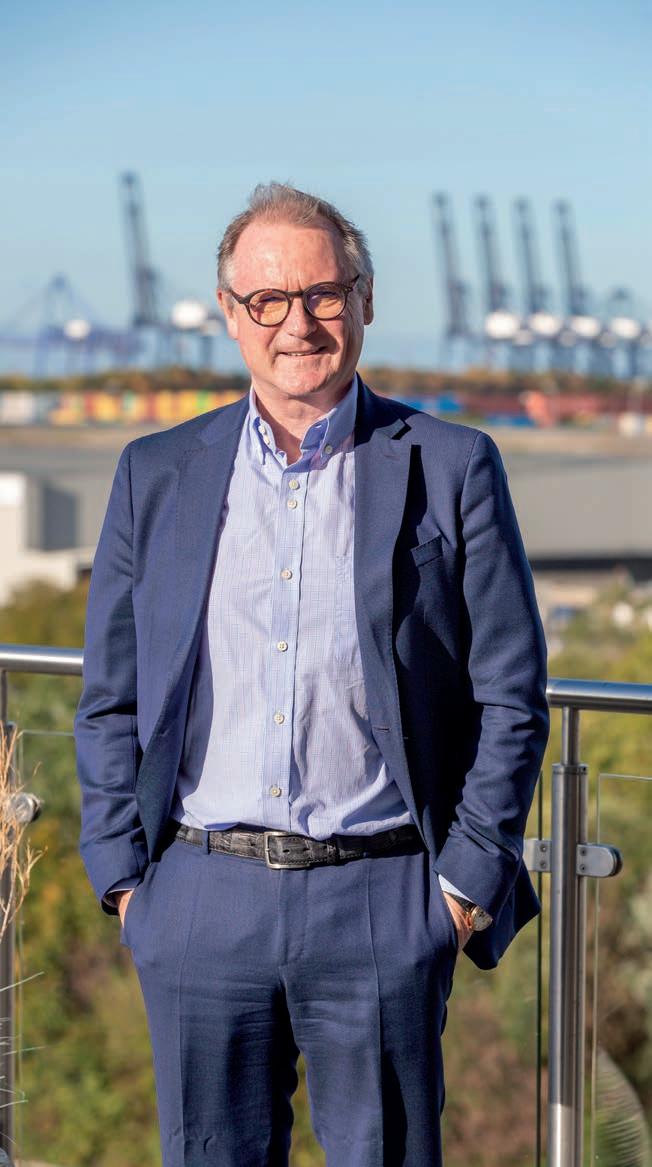
“Irresponsibly sourced HVO is a potential scandal waiting to make itself known. We are looking at reducing our environmental impact but only where the source of the fuel is waste,” he says. “Gas is not there and those operators who have gone for LNG regret it because it has shot up in price and it is a sensitive procedure to load it up.
“Hydrogen is an interesting alternative with its capa bility to slot into our current refuelling infrastructure but the OEMs’ focus has been in battery technology and it’s really getting there.
“We’ve road tested electric vehicles in Sweden fully freighted and they performed extremely well. The OEMs
are all working on the range and they are up to 300km, which we can work with for our business.”
The arrival of electric trucks will change Maritime’s current strategy of replacing its internal combustion engined (ICE) vehicles every three years.
“The model we currently have with the ICE has four phases – we are the first owner, our sub-contractors are the second, export is the third then it’s reselling and recycling for parts,” he says. “Now we are dealing with a truck that will cost well over £300,000 – it’s going to change the whole model.
“The valuable bit is the battery. I think we will see the battery diminishing in its capacity over time but it will have a second life and might be used to power a climatecontrolled warehouse or a community.”
While electric truck technology is now viable, Williams still worries about the charging infrastructure.
“We need to get enough power into the vehicle in 45
MotorTransport 13 motortransport.co.uk 31.10.22
MAIN MAN: John Williams heads up Maritime, which is the UK market leader in the container transport sector
ON THE UP: Williams has seen improving market conditions as the country eases itself out of Covid restrictions
minutes to coincide with the driver’s break, or we would have to completely change the way we operate and that will require customer buy in,” he says. “Taking 12 hours to charge a truck with the demands upon us today isn’t going to work.
“We looked at the cost of upgrading our depot electri cal infrastructure and it was frightening. Given the sizes of our fleet around the country, we are realistically look ing to draw enough juice to charge anywhere between 30 to 150 trucks per site. This would involve building new substations at prohibitive cost without government support.”
Williams believes that the overhead catenary system operating in other parts of Europe may work on “highly utilised routes with a DC at both ends” or on a section of the M1 but he remains sceptical.
“To meet our targets we are concentrating on putting more on rail as that is a real saving,” he says. “Our effort is also going to convert potentially half our fleet to battery electric trucks at the terminals.”
Maritime now operates from 40 locations, including a depot at every major UK port, together with a growing number of inland rail terminals and a network of stra tegically located transport and container storage sites.
“We move much more of our work inland by rail and that gives us the chance to avoid road congestion and other issues like wage flare ups,” Williams says. “The labour market in Felixstowe became so difficult we made the decision to take the pressure off and move 50 trucks out and we will only bring these back when things change.
“We have the flexibility to reallocate our fleet, whereas if all you are is a Felixstowe haulier you have no choice.”
Positive outlook
Although Williams worries about the UK going into recession as inflation and interest rates rise, he is bullish about Maritime’s long term prospects. Its growing mul timodal operations help to support gross profit margins because they improve utilisation of the container road fleet and the inland terminals appeal to customers who
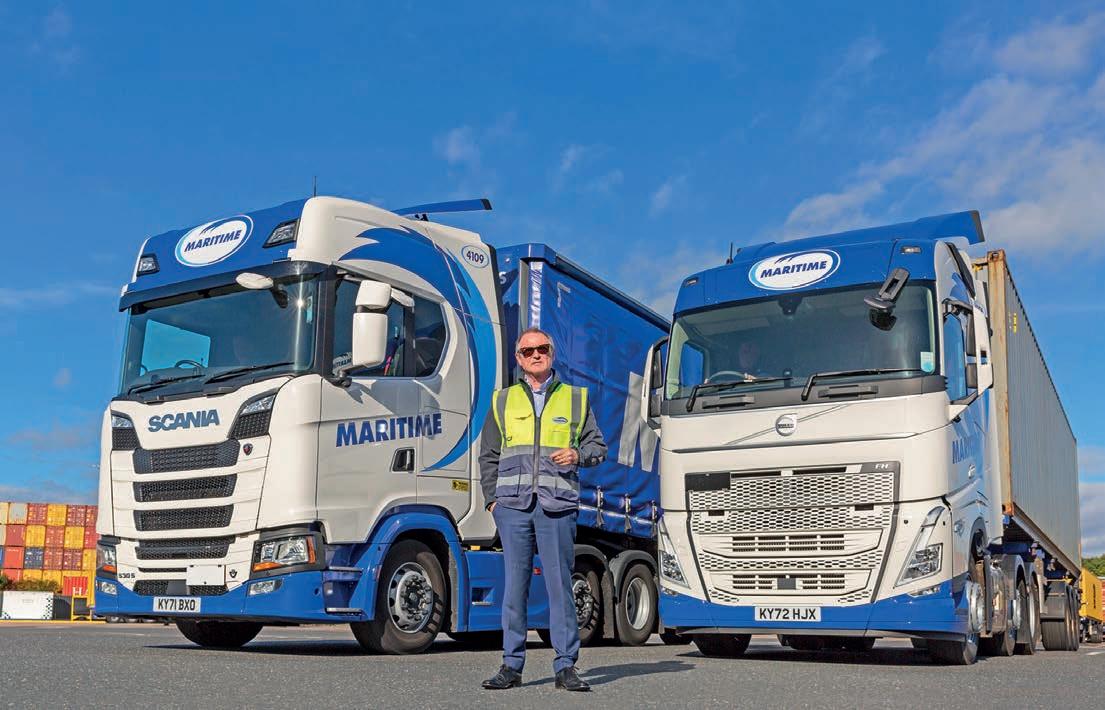
want to use rail or can’t find storage and handling resources at the ports.
Maritime’s terminals have become holding areas because of the lack of warehousing space.
“Companies are holding more inventory because of reliability issues with supply chains and as there is no warehousing available it stays in the box. We move it and hold it at the terminal until it’s needed,” says Williams.
“As post-Brexit container volumes grow I see us at least maintaining our market share. We are investing heavily in rail and will not stop at seven terminals. More are planned or already underway.
“Because we will operate the most sustainable full-load supply chain in the country we believe we will get custom ers singling us out and saying ‘we want to put our cargo with Maritime because it is less damaging to the environ ment and meets our carbon targets’.
“And distribution has also grown to £150m turnover after only 10 years.”
Looking ahead
Maritime has built its distribution division organically from a standing start but doesn’t rule out strategic acqui sitions in the future.
“We operate a fleet of 1,200 curtain-sided trailers throughout the UK. We apply our culture of flexibility and operational excellence developed over years in container transport to great effect in distribution,” he goes on.
Maritime’s distribution model is straightforward. It doesn’t spot sub-contract work or use agency drivers, which Williams says “is unique and appeals to our distri bution customers who prioritise service and product availability”.
As Williams looks forward, he sees his strategy of trunking by rail creating a modal shift for domestic cargoes too. “This is the next big opportunity for Maritime and with the commitment and support of great customers and suppliers we’re already making it happen.” ■
motortransport.co.ukInterview: John Williams 14 MotorTransport 31.10.22
The pressure’s on
With fuel costs spiralling in recent times, have the sums changed in favour of operators using low-rolling resistance tyres? Jack Carfrae speaks to those in the know across the tyre industry to gauge the pros and cons as we move forward

We couldn’t find anyone at a major manufacturer who would argue with Terry Salter, Bridgestone’s retread manager, when he sums up low-energy tyres: “The longer the distances you travel, the greater the amount of time you spend on motorways and dual-carriageways, and the lower the number of drops, the more advantageous they will be.”
In short, if your vehicles spend their days trunking, they’ll be cheaper to run when they’re wearing lowrolling resistance rubber.
The same tyres are best avoided at the other end of the spectrum. Multi-drop routes – those usually reserved for smaller vehicles in towns and cities – do not suit low-energy rubber, to the extent that “you can actually get adverse wear”, according to Salter.
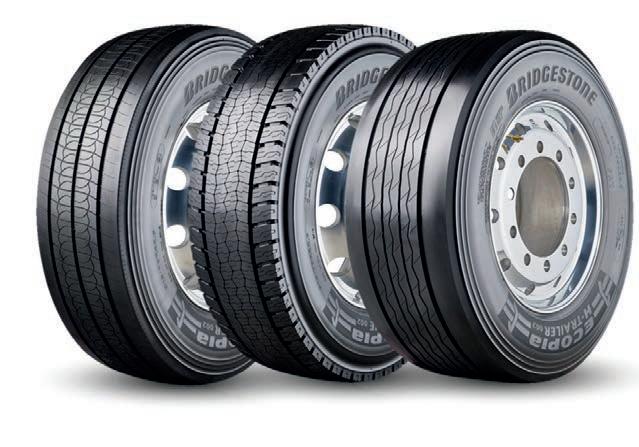
Doing the miles
“I’ve got some customers who only do 35,000km a year,” adds Wayne Bell, national fleet account manager at Prometeon. “An example would be Travis Perkins. It’s stop-start, dropping off, picking up. You wouldn’t put an energy tyre on that vehicle.”
Nice and easy if your trucks fall into either of those camps, then, but few operators can be so neatly categorised. Plenty of vehicles play multiple roles, trailers are swapped left, right and centre, and you might well have a fleet made up of vans, rigids and tractors. “You could
MotorTransport 15 motortransport.co.uk 31.10.22 Low-energy tyres
HOW MUCH CAN LOW-ENERGY RUBBER ACTUALLY SAVE YOU?
With the caveat that the following figures are from companies that sell them, and that they were fitted to the right kinds of trucks, driven in the right kinds of circumstances, there are some serious savings to be made from low-energy tyres.

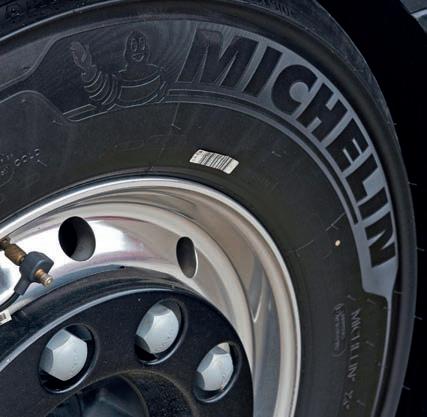
Prometeon reckons its latest Profuel item is good for a 1.4% fuel saving, based on a fleet of 150 trucks and trailers performing long-haul work, and it said that equated to a saving of €328,000 and 702 tonnes of CO2.
Bridgestone told us that long-haul operators changing from a D- to an A-rated tyre could expect a saving in excess of 10%, and that the premium for the tyres themselves would be no more than 5% over equivalent rubber.
At the advent of the A-label, Continental conducted a test on a series of 6x2 tractor units and a mixture of trailers. It swapped C-rated tyres for As and took fuel readings from the trucks’ telematics systems. It reported a 4% fuel saving for eight out of 10 of them, and the two odd cases were traced to vehicles pulling bulk trailers instead of standard box units.
easily have a typical fleet with three different tyre poli cies,” says Tony Stapleton, head of fleet sales at Continental.
Operators could be forgiven for looking to low-rolling resistance tyres when just about every other cost is only going one way. If there’s anything to take from the above, though, it’s that they are only ever worthwhile when correctly applied, and manufacturers’ increasing tenden cies to fit them out of the box can be a bit of a clanger.
Much like white goods, the rubber has a rating system for its drag co-efficient; ‘A’ is the slickest with the lowest CO2, and the level of environmental friendliness decreases as you ascend the alphabet. Again, though, that is only as good as the application in practice.
Tyre rolling resistance factors into the EU’s VECTO regulations, which apply to new vehicles above 7.5 tonnes and stipulate that, compared with 2019 levels, their emis sions must drop by 15% by 2025 and by 30% by 2030. Yes, we’re no longer in the EU, but it hardly makes sense for OEMs to build different vehicles for the UK, and you can’t really blame them for standardising low-energy tyres when the rulebook says so.
Long-haul work
There’s nothing wrong with pursuing eco-friendly meas ures in principle, but the problem here is that new vehi cles shod with low-energy tyres are set up for long-haul motorway work, and if that isn’t what they’re going to
be used for, then you’re stumbling out of the gate.
“Sometimes, you would have an end-user buying a truck with a tyre that was designed for the truck, but not for the application,” explains Michelin’s marketing direc tor, Richard Bezzant: “If operators are not explicit with what they want at the time of purchasing that truck, then they are going into a sort of chance lottery position, and that’s brand-agnostic.
“Your issue is generally with tractor units. You buy a nice, powerful tractor unit that’s potentially got some lower-profile tyres on it, and it’s much more likely to be a European spec rather than a UK spec, and the natural tyre that’s going to be fitted will be a very low-rolling resistance product.”
It’s incumbent upon the operator to specify the right rubber for the job, but tyre manufacturers nonetheless bridle at the reputational damage that standard eco tyres can cause, because it’s their name on the sidewall when a nearly new truck needs fresh tyres sooner than expected.
Efficiency drive
Stapleton explains: “My biggest personal fear is if we, as the manufacturer, don’t get to the smaller user who’s bought two shiny new trucks for his fleet of 10, and they [the vehicle OEM] call them super-low efficient resistance tyres, then before long, he says, ‘We need to change the tyres already?’”
motortransport.co.ukLow-energy tyres 16 MotorTransport 31.10.22
Another hole in VECTO is that, with respect to tyres, it extends only as far as the new vehicle. “As soon as you’ve bought the truck, you could actually take all the tyres off and fit whatever you like, so the legislation is not quite joined up in that respect,” adds Stapleton.
Every tyre company worth its salt has reduced rolling resistance across its product range, and although the A-rated low-energy items sit at the top of that, tyres destined for other applications have significantly lower drag co-efficients than their forebears.
“All the new products, regardless of whether they’re designed out-and-out for fuel saving, have been designed to have a lower rolling resistance – even your standard tyres for tippers,” adds Bell.

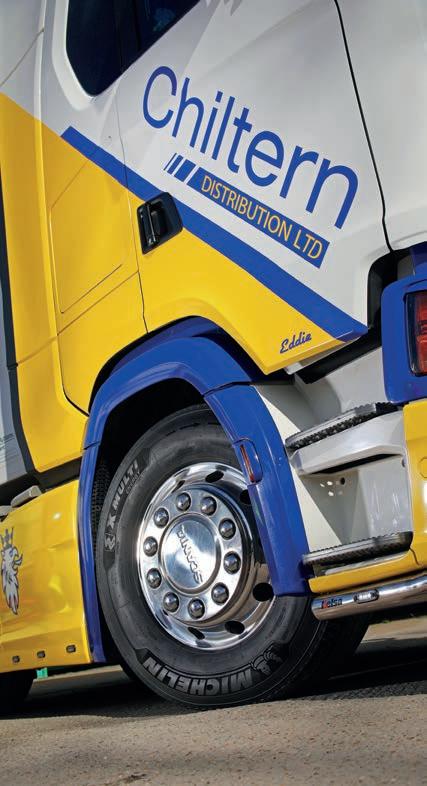
There are also more variations than there used to be. Bezzant reckons there were “basically four types of tyre” around 15 years ago, while the firm’s range has since grown to around three times that, all with lower rolling resistance than before, to cover those vehicles deployed for a broader range of duties.
“It’s why our range has probably become slightly more complicated over the last few years, because we start filling in the gaps,” he explains. “In 1992, we started adding silica to our products to reduce the rolling resistance. You then had all these different applications: ‘I work in the UK, so one minute I’m in the city and the next I’m driving down the M5’; and ‘I run coaches and buses, therefore I need something to protect on my sidewalls’; and then, ‘I run quarries, I need a robust product’. Today, all of those things all cross over, so we actually have products that sit between each of those clear categories.”
Hybrid model

He explains that the company’s traditional tyres – and you can apply the same to other manufacturers – have morphed into multiple hybrids of one another.

“At the top end of the range, you might say, ‘I need a low rolling resistance product; I also need some robustness, but I’m not giving them a really hard life’. At the other end of that, you’ve got farming. For example, ‘I drive down a farm track, fill up a big bulker with grain, but the next thing I do is drive 200 miles down the motorway’. They don’t want a tipper tyre, they need something that can do both, so at the back end of that range, you have this crossover. You don’t need a full-blown, ‘I’m going to get stuck in the mud’, high-damage product; you need something that fits between them.”

THE PERKS OF RETROFITTING TPMS
“To be brutally honest, the most important thing is tyre pressure,” says Tony McHugh (pictured), UK sales and marketing director at Giti Tire. “You can have the best rolling resistance tyres, but if you haven’t got the pressures correct, you are limiting the performance.”
It’s hard to argue with that and, if it’s a lower fuel bill you’re after, McHugh and others in the know recommend a rigorous inspection schedule and liberal use of tyre pressure monitoring systems (TPMS) ahead of any other initiative, including new rubber.
required ‘new vehicle type’ buses and trucks to







The EU’s Vehicle General Safety Regulation required ‘new vehicle type’ buses and trucks to be fitted with a TPMS from 6 July, and that will extend to all new models on 7 July 2024, so you can be pretty confident any new model will have one. That said, the wait list for new trucks is not short, and plenty of operators will be running vehicles without them. It is possible to retrofit TPMS systems, although McHugh reckons operators are often deterred by the cost. Prometeon’s Wayne Bell agrees that it’s not cheap, but adds that it could be a sage investment above other cost-saving efforts.
“I would say minimum cost to retrospectively fit [a TPMS] to a 6x2 would be £400 to £500,” says Bell. “Then you’re paying for the telematic information… which could be anything from £10 to £25 per truck. The more trucks you have, the cheaper it becomes.”
MotorTransport 17 motortransport.co.uk 31.10.22
■
MT Awards 2022 winner profile
Low Carbon Award
Green pioneers
Temperature-controlled specialist McCulla Ireland was a standout winner of this year’s Motor Transport Low Carbon Award for its innovative approach to sustainable energy.

As well as providing logistics and warehous ing for the cold chain sector in the UK, Ireland and continental Europe, the company now also has its own energy division, called Alternity Biogas Energy (ABE).
This includes an anaerobic digester (AD) plant that enables the company to produce its own energy, which is used to run the site and power the firm’s growing fleet of gas-powered HGVs.
The brainchild of McCulla owner and chairman Ashley McCulla, the AD plant is completely sustainable, since it doesn’t require any grid electricity to operate – it powers itself with energy it produces.
In January 2017, the first stage of the AD plant took shape, with McCulla working in partnership with Weltec BioPower.
The intention at the time was to use the residual mate rials from McCulla’s own agricultural business and to create synergies through the use of renewable electricity and heat in the refrigerated warehouse at the company’s main logistics depot.
With the plant digesting slurry, agricultural residues and grass silage from McCulla’s farm, the company was able to produce green energy with a 500kW combined heat and power(CHP) plant for use on its own premises.
It was one of the first companies in the UK and Ireland to operate a carbon-neutral cold store.
Then, last year, McCulla moved to food waste as the AD plant’s feedstock, adding a further ‘green’ element to the process by diverting waste from landfill to generate energy and returning agricultural land to food production.
McCulla’s waste-to-energy transport initiative provides significant environmental and operational benefits, including:
WHAT THE JUDGES SAID
The judges said: “This is a great entry, demonstrating significant reduction in CO2 across the whole operation; an impressive focus on reverse logistics and keeping vehicles full; and demonstrating a whole series of carbon-reduction activities in addition to the focus on fleet emissions.
It is a great example of what can be done on a small scale to improve sustainability.”
Self-sufficient
Since the AD plant’s inception, McCulla has been able to generate its own electricity, which has made the organisation completely self-sufficient in powering its offices and cold stores.
The plan of upgrading the plant to produce HGV fuel became a reality last year, when McCulla took delivery of 10 new Iveco Stralis NP trucks. It has 19 more on order.
These first vehicles are just the beginning, and McCulla aims to phase out diesel in favour of gas to further reduce its emissions and reliance on fossil fuels.
By having a successful proof of concept, McCulla also hopes to inspire other transport operators to make simi lar investments in this type of renewable energy.
“We truly are self-sufficient,” says McCulla MD Peter Summerton. “And it is achieved through a co-operative effort with our customers, because everybody is a stake holder in the process.”
He adds: “In fact, there are only two by-products that come out of the process. One is waste plastic, which goes to recycling and is used to make those black summer benches that you see around parks.
“The other thing is the liquid left after the digestion process, and that gets pasteurised and then goes back on to the fields because it’s a natural fertiliser.”
A win-win ambition
Based on electricity production alone, the AD plant has reduced carbon production by 428 tonnes per year, equating to 1,256 tonnes of carbon dioxide.
Trucks operating on renewable biomethane can emit 93% less in carbon emissions than a diesel truck. At the time of entering the MT Awards, McCulla had already achieved its first half million kilometres driving on gas power, which translates to a CO2 saving so far (compared with diesel) of 386,270kg.
McCulla sees decarbonisation as the biggest challenge facing food production and transport – and by proving this circular economy concept, it is offering an alternative and sustainable solution.
The motivation for the initiative combined social and environmental responsibility with commercial viability.
Gas trucks are considerably quieter to run than their diesel equivalents, helping to reduce noise and enabling McCulla’s new IVECO trucks to operate in urban areas in ‘quiet mode’ for early morning and evening store deliveries.
Companies supplying food waste to McCulla are contributing to a combined 350-tonne reduction in food waste going to landfill every week.
McCulla recognises that anything it can do to optimise fuel economy and energy consumption ultimately reduces environmental impact and saves money.
The reputational impact of having a cleaner transport fleet undoubtedly attracts customers that wish to improve the environmentally friendliness of their supply chains and enhances the company’s reputation, particularly in the local area, as the community can clearly see that McCulla is reducing its environmental impact – reducing emissions reduces air pollution.
It has therefore implemented a range of environmen tal improvements over the years, such as rainwater harvesting for reuse in truck cleaning; a focus on driving style and driver training to improve fuel efficiency; and implementing sophisticated warehouse control systems to optimise electricity usage.
But the AD plant was a radical initiative which signif icantly raised the bar.
Producing its own energy also means that McCulla can determine all energy costs for the foreseeable future and will not be dictated to by world markets.
Customers are also increasingly focused on having environmentally responsible suppliers, so McCulla knew it could win tenders by implementing sustainable prac
18 MotorTransport 31.10.22
THE RESULTS
McCulla Ireland is leading by example in the field of sustainable energy
Sponsored
NEW POWER: McCulla’s anaerobic digester plant is completely sustainable as it powers itself with energy it produces
tices: reducing customers’ food waste is an added-value proposition.
There was also a risk-management element to its focus on self-sufficient energy: with energy costs being second only to labour costs, being able to determine electricity and fuel costs was attractive.
“Everybody around us should see this as a prototype project where going green has been done on a commer cial scale – and more importantly, done on a commercially viable scale,” Summerton says.
“So there is no reason we shouldn’t see more and more of the set-ups that we have created here popping up across the UK. Because, quite simply, we have been first to it and we have taken a lot of the pain from the learning, so hopefully those that come next will have an easier journey as they will be able to learn from our mistakes.”
He adds: “Have we made mistakes? Absolutely. The first one being that we would have built the site three times bigger had we known how successful it would be.”
Although not all of McCulla’s fleet uses this natural and renewable power, the company aims to phase out diesel HGVs in favour of gas within five years to eradicate its reliance on fossil fuels.
It also runs pool cars on electricity generated from the AD site, and is exploring the latest sustainable refriger ated technology for its fleet.
Brian Beattie, operations director, explains: “We are looking to move the diesel engines on our refrigerated trucks across to be sustainably powered by trialling an Ecogen 2, from Swedish manufacturer Hulsteins.
“It’s only at a trial stage. We have one truck up and running initially that takes its feed from the compressor fitted on the tractor unit that then runs the fridge on electric rather than diesel. So we are removing more greenhouse gases from the operation, as we drive towards our net zero aim.
“We are not content to stand still and are always look ing for the next innovation,” Beattie adds.
As well as the circular nature of the feedstock supply chain, the company is also developing systems to make the AD plant’s process model as sustainable, circular and lean as possible.
The aim is to operate to world-class manufacturing

standards in safe working practice, good engineering practice and best manufacturing practice, through a quality management system that regulates and sustains the standards, with accuracy and integrity.
Zero waste
Via a combination of a scientific approach to risk assess ment analysis and good engineering practice, the aim is to produce a uniform product output with zero waste by the end of 2022.
Ashley McCulla said: “We are extremely proud to introduce Northern Ireland’s first circular economy waste-to-energy transport fleet.
“Through collaborative partnerships, we collect food waste from our customers and process it through our anaerobic digester plant to produce energy. This includes electricity for our cold stores and biomethane gas for our trucks.

“These trucks reduce CO2 emissions by 93% in comparison with diesel. We also supply biofertiliser to local farms to grow more food. It really is a full-circle process that reduces waste to an absolute minimum right across our supply chain.
“The logistics industry is very energy-intensive, with over 40% of our costs coming from electricity and diesel, both of which fluctuate wildly from year to year. With this plant we are now able to manage our biggest costs.”
CIRCULAR ECONOMY
McCulla Ireland has developed a circular economy – a closed loop from food waste to fertiliser using an anaerobic digester (AD) plant.
The circular nature of the initiative includes:
Food waste is collected from factories, retailers, manufacturers, wholesalers and hospitality outlets across Northern Ireland – including, for example, Lidl NI and Finnebrogue.
The AD plant generates electricity, which is used to store temperaturecontrolled ingredients and food products for McCulla customers in the company’s cold stores.
The AD plant generates biomethane gas, which is used to power McCulla’s trucks to transport food to retail stores and hospitality outlets.
In addition, the AD plant’s biofertiliser by-product is also being used on NI farms, therefore also playing a part in growing food.
MotorTransport 1931.10.22
by
■








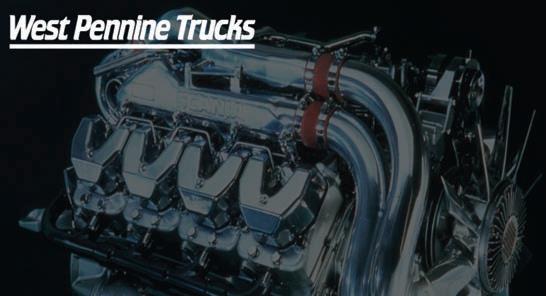



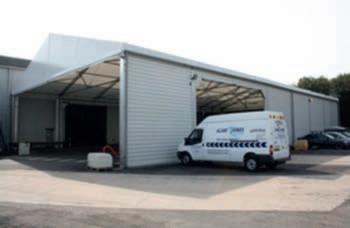


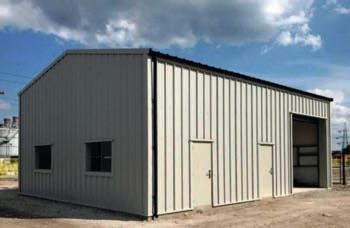


























































































































































































































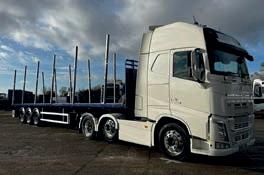
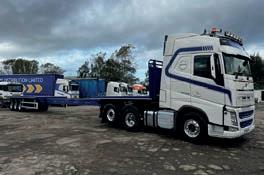
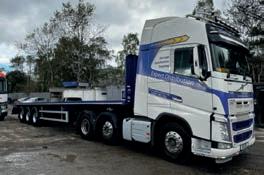












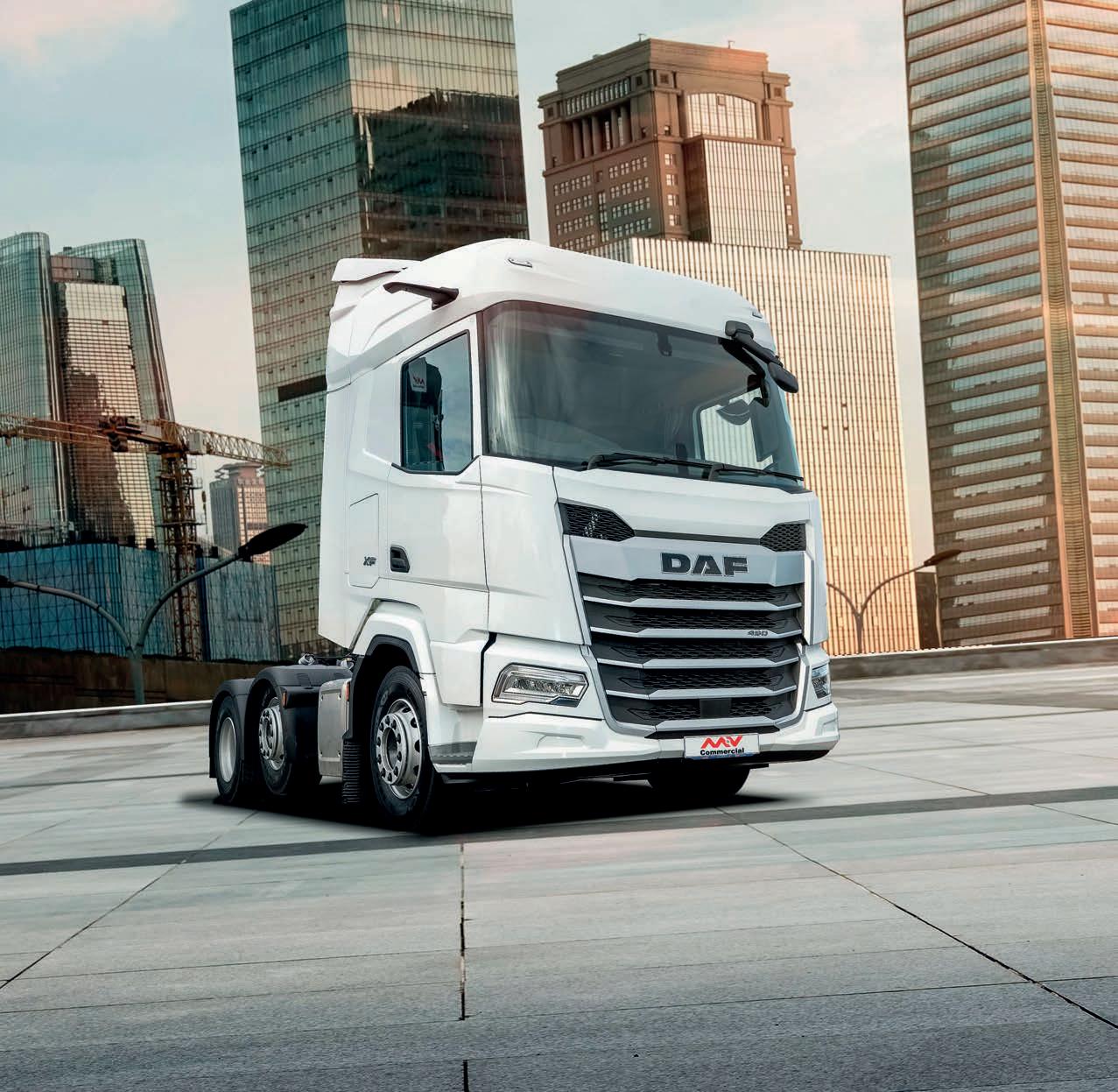
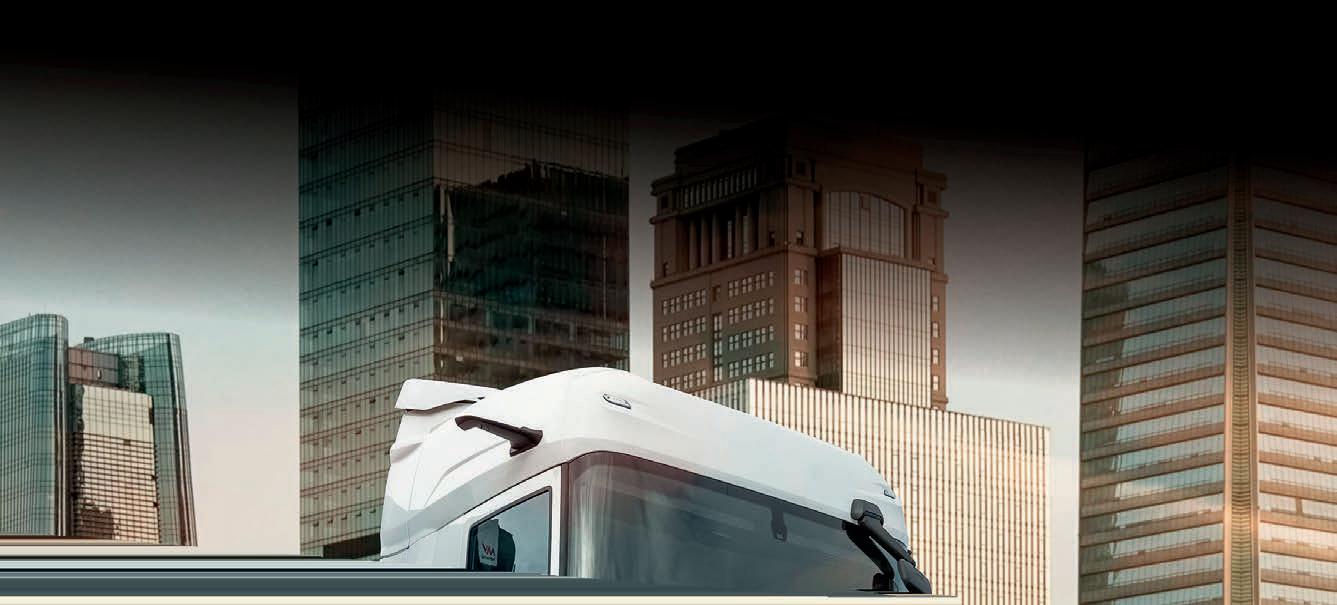

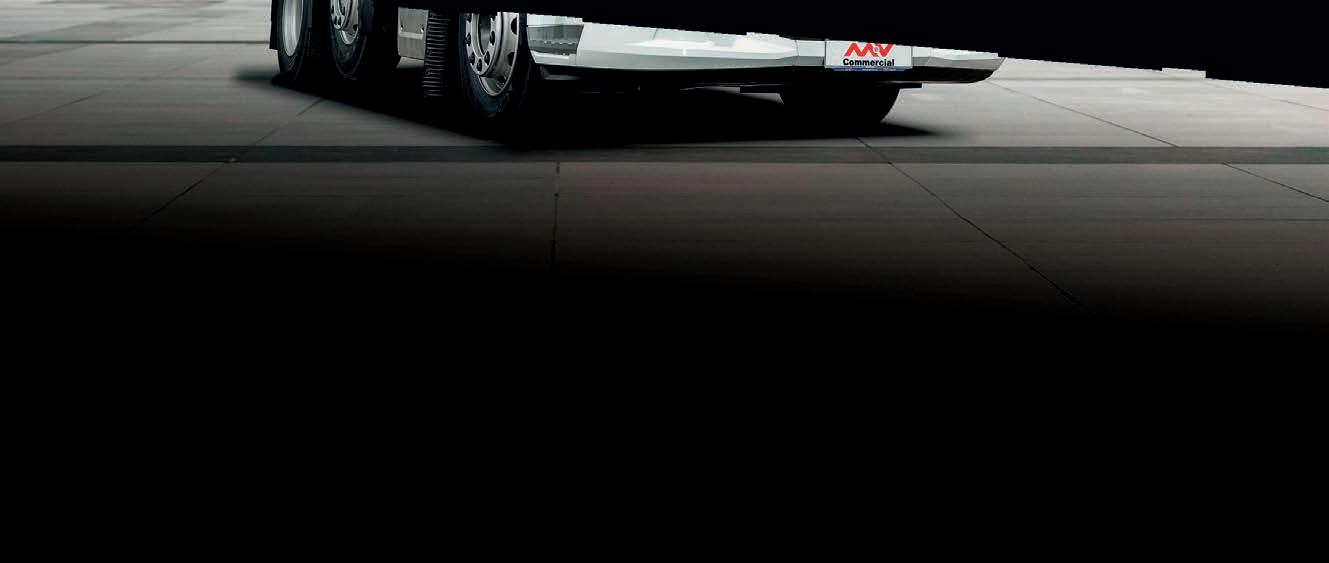
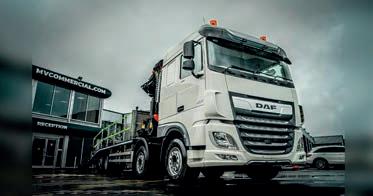

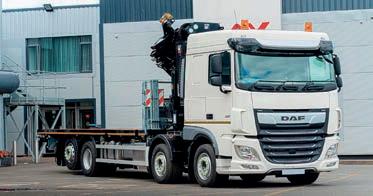
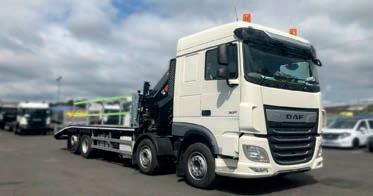
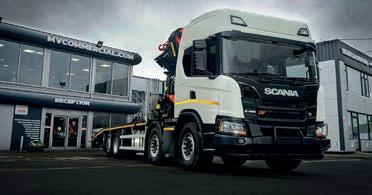




















































 By Tim Wallace
By Tim Wallace









































































































































































































































